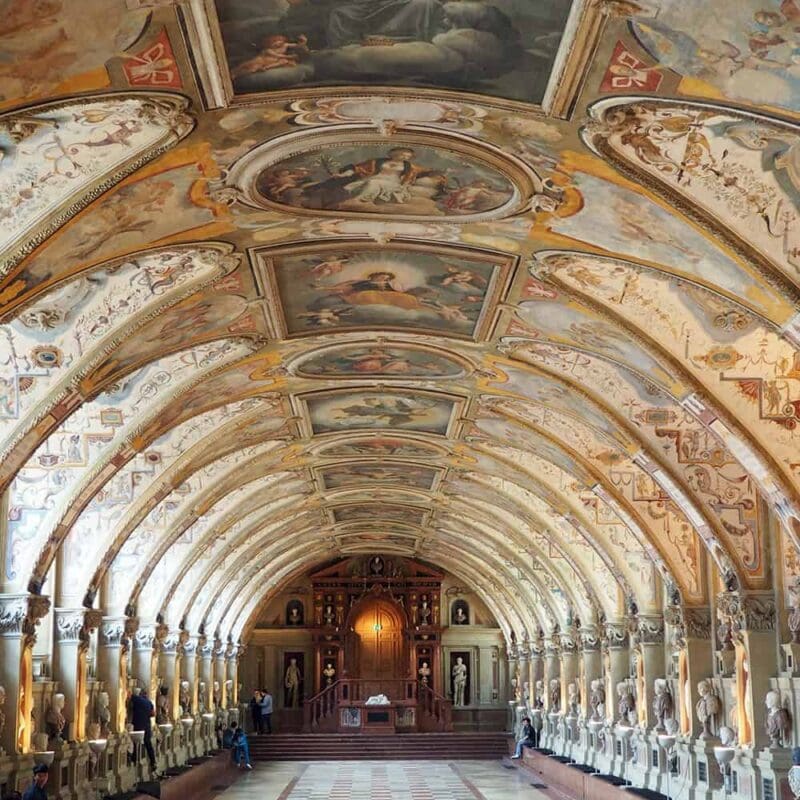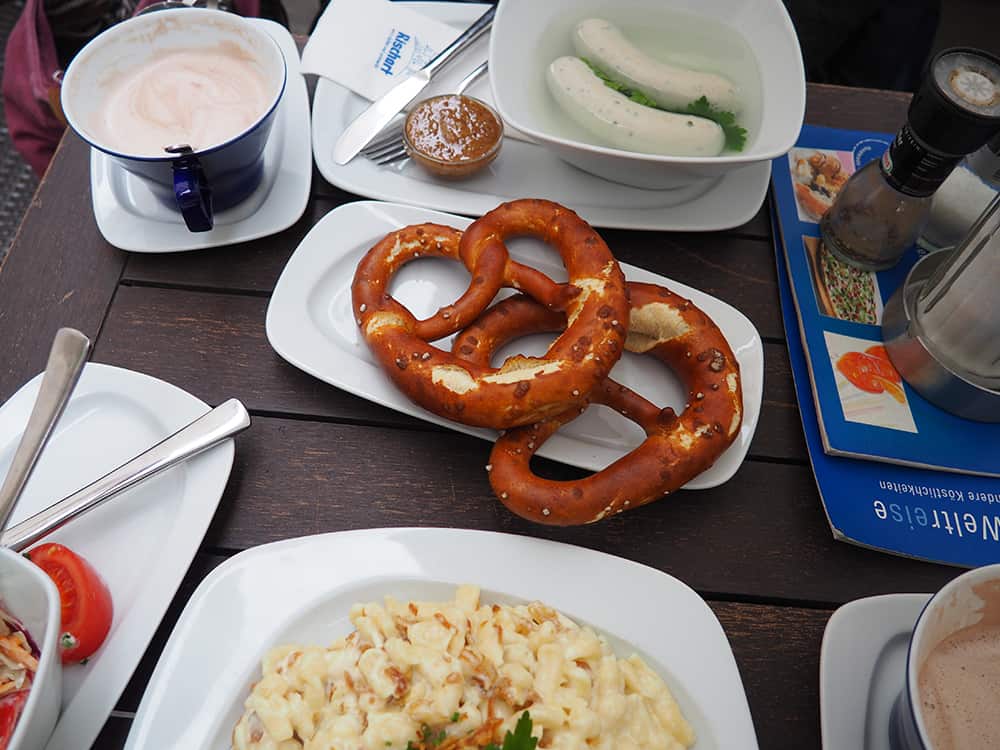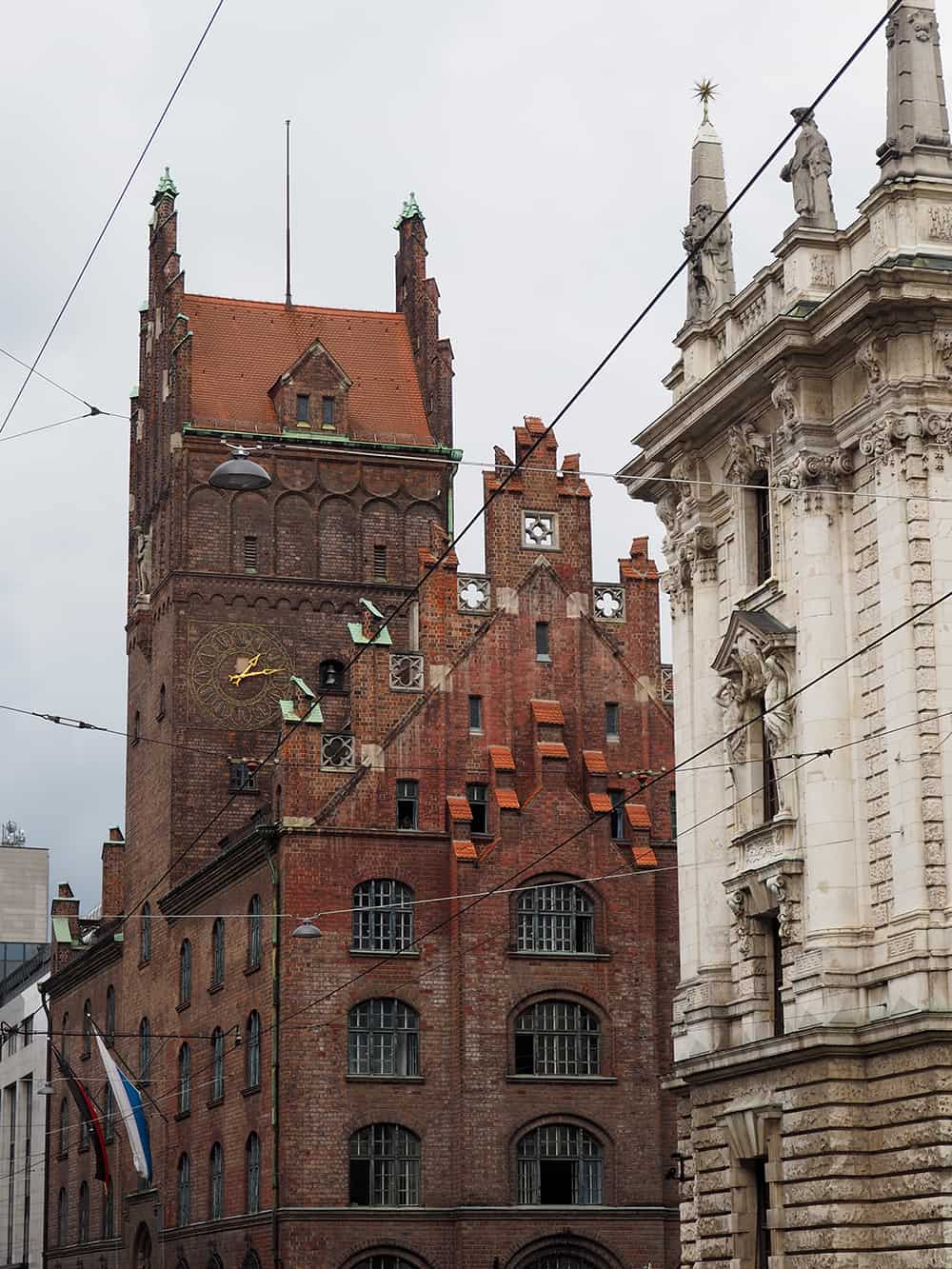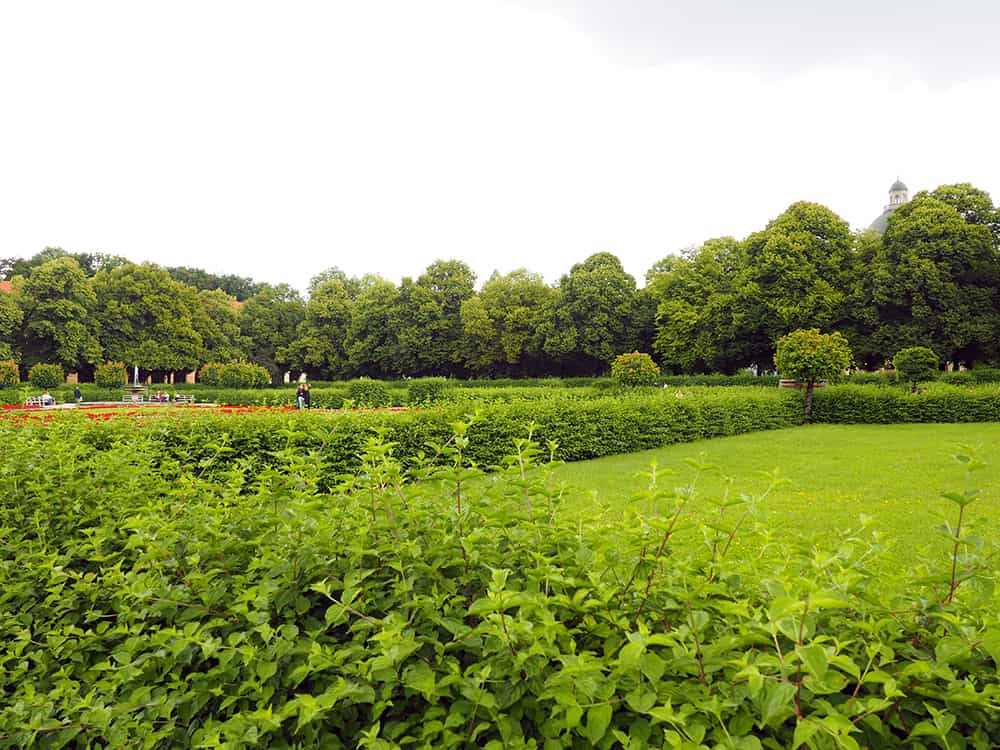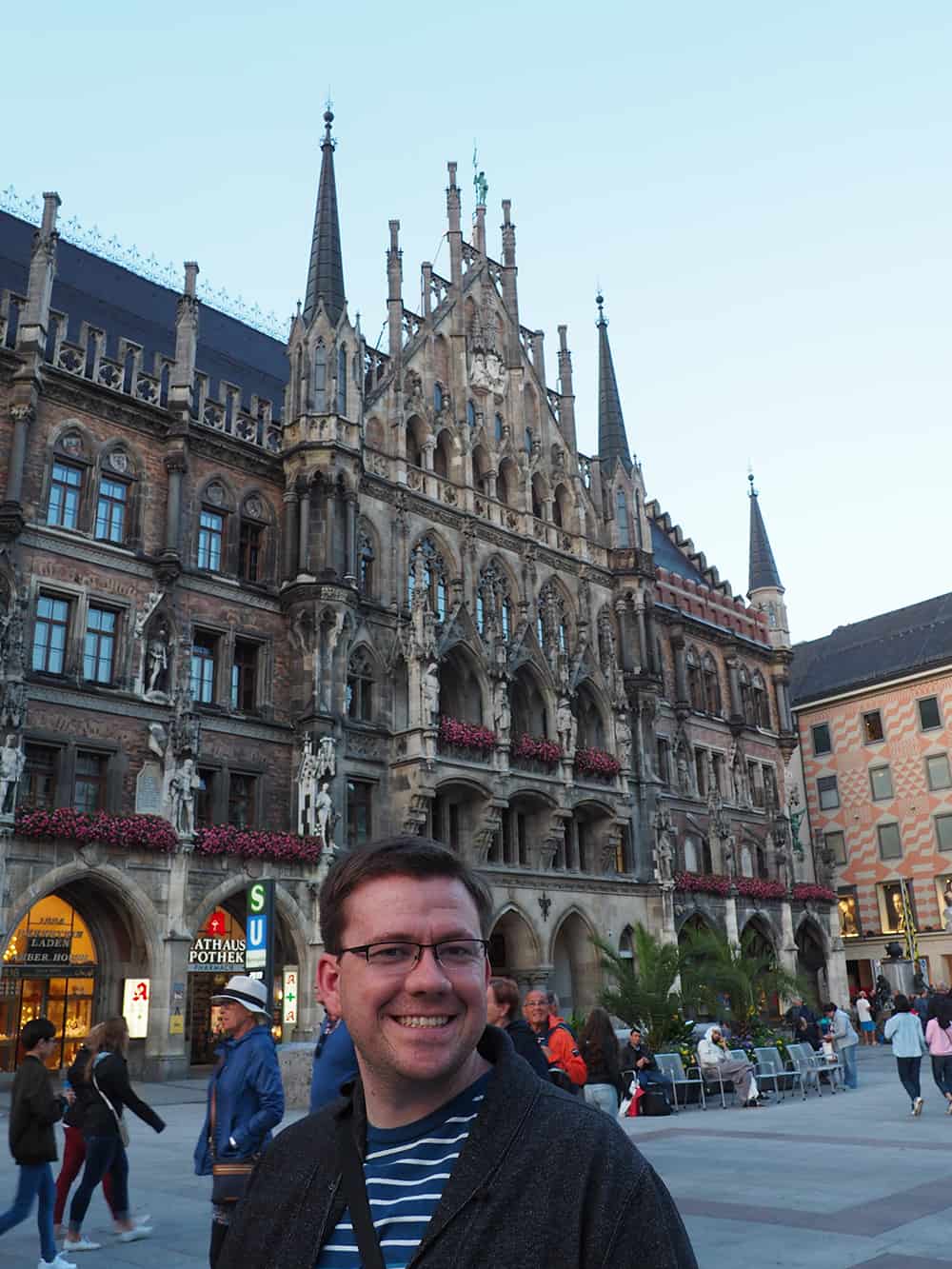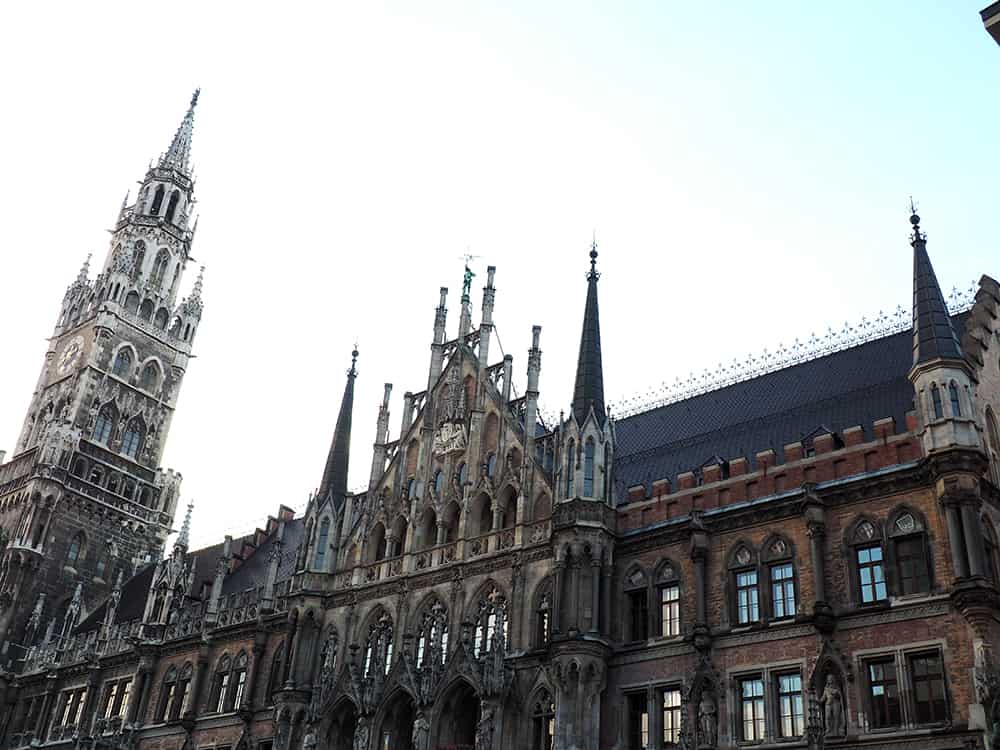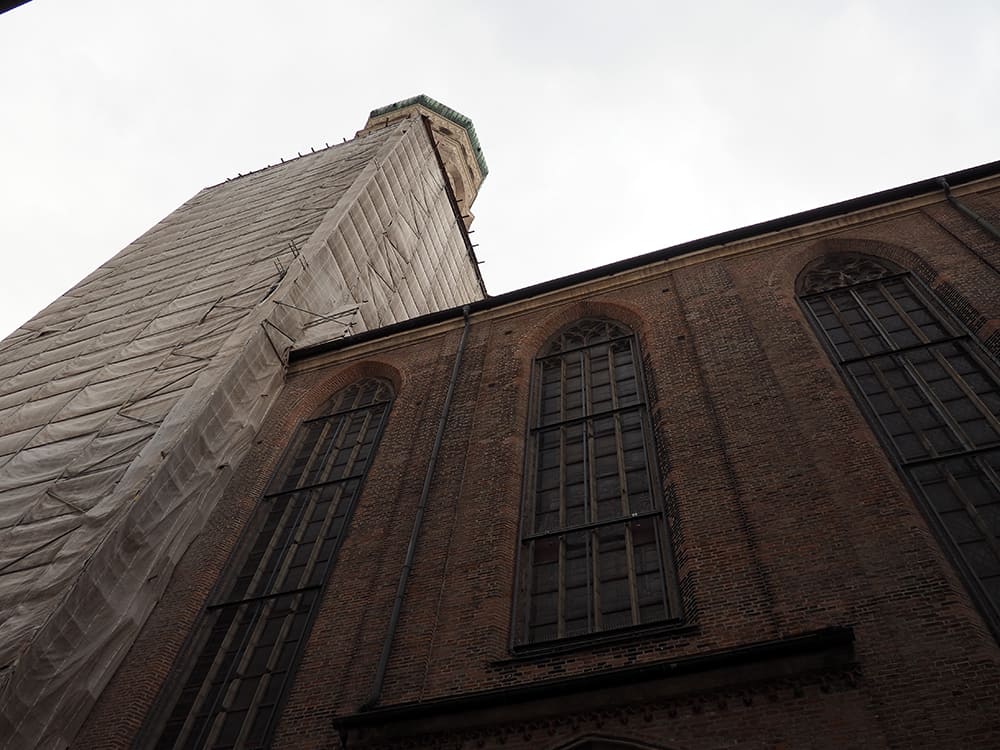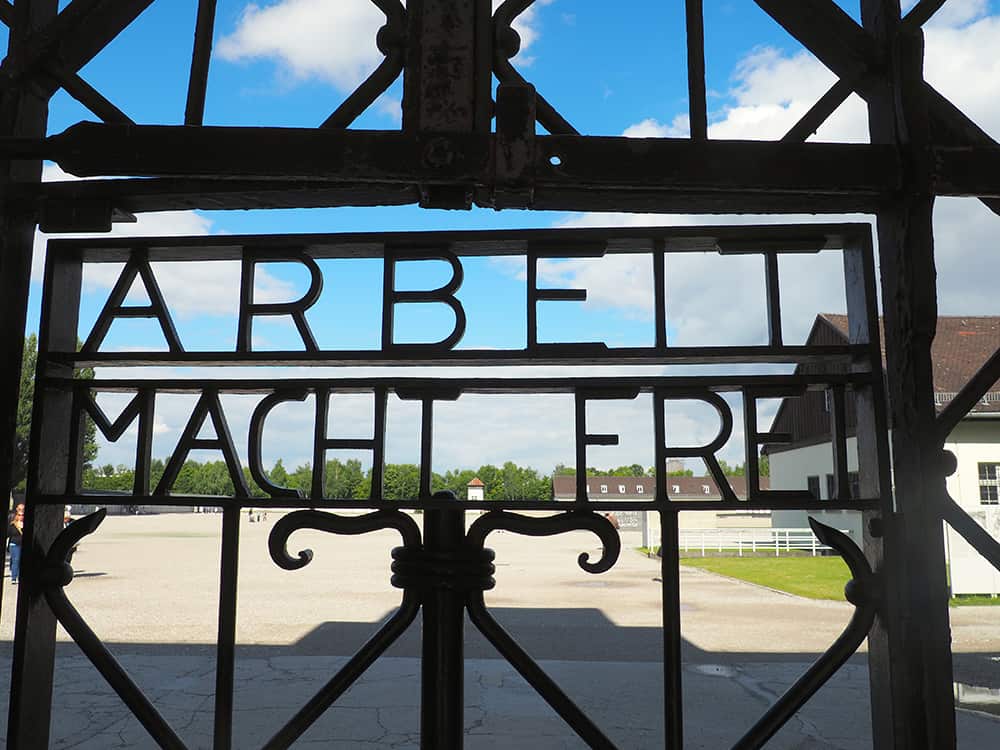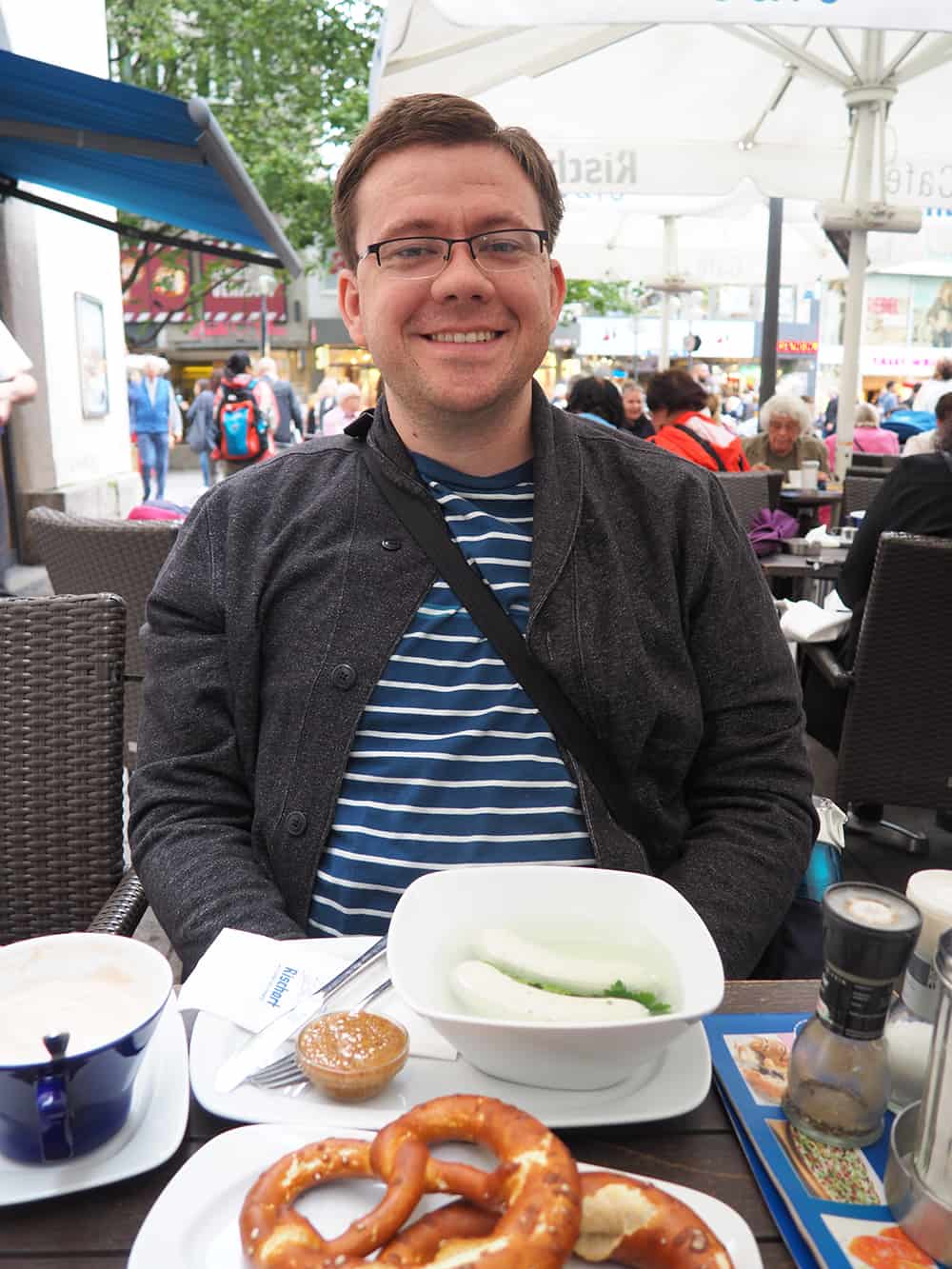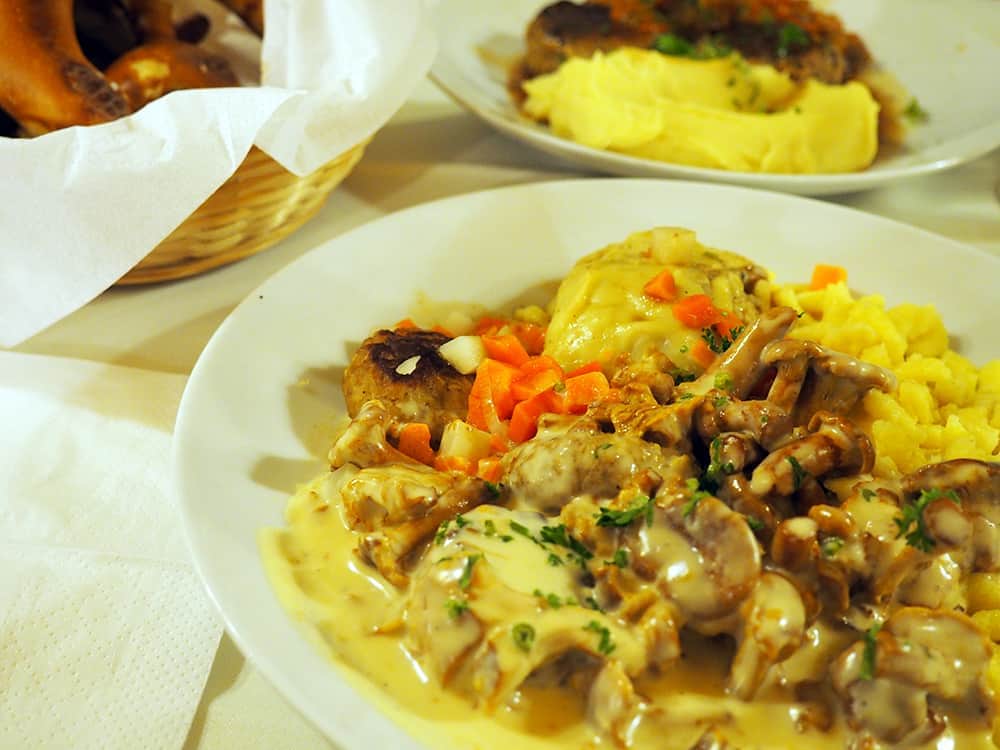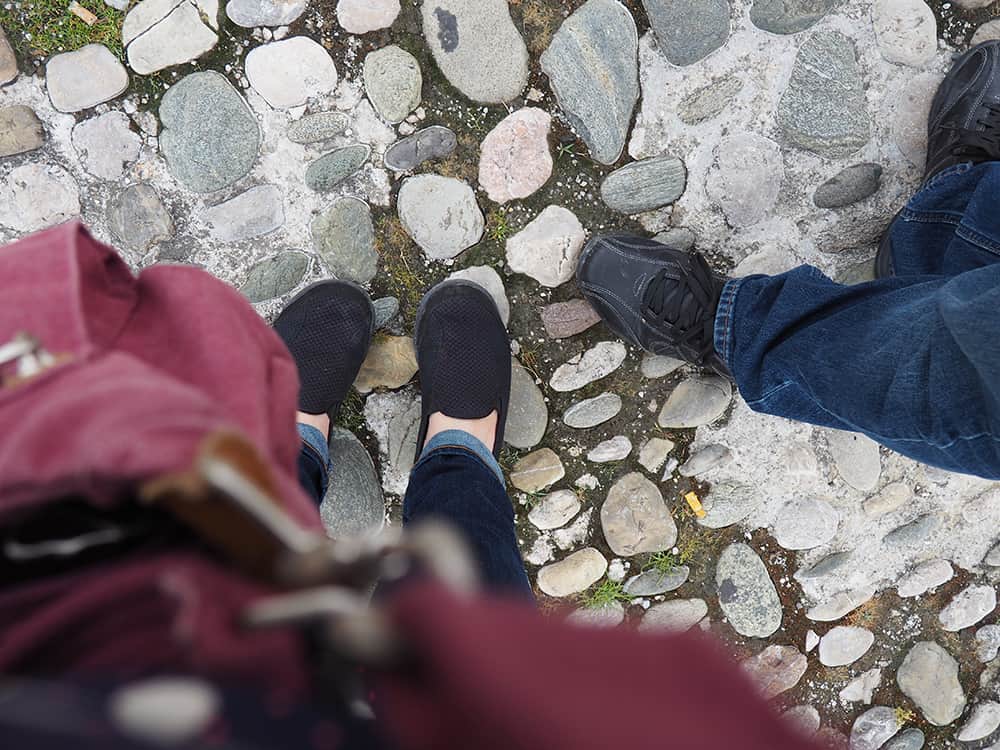We couldn’t believe the level of detail in woodwork and stained glass in Munich, Germany, nor could get over seeing signs that a building that said they were established in the 1300s… like it was no big deal. All of the architectural details in Munich, Germany are absolutely beautiful and insane. Munich was so surprising to us because it was such a mix of modern and historical. Shopping signs for modern name brands off of a medical church? Check. Malls made out of elaborately colored historic buildings? Check. People yelling at strangers if they jay walked with no traffic? Check. Honestly, the last thing made us laugh because it was so different from previous places we had been.
When we were in Italy, there was a record high where most of our vacation was over 90-100 degrees Fahrenheit. When we crossed the border to Germany, there was a record low where the temperatures maxed out at around 60 degrees. Rain came in sheets while we were walking around almost everyday. It was honestly the coldest July experience I have ever had and limited some of the things we were able to see. We found out that it takes about 2-3 days for blue jeans to dry in a hotel and we couldn’t keep our clothing and shoes dry enough to do a lot; it also helped inspire our favorite travel gear for Ireland listed below. Despite the weather craziness, Munich was beautiful and probably had my favorite gift shops of anywhere we visited in Europe. While we never would have bought a cuckoo clock or a dirndl (a traditional dress), it didn’t stop us from looking at all of them because they were so intricately detailed.
RELATED // my favorite travel gear
PLACES WE VISITED IN MUNICH, GERMANY
Munich Residenz
The Munich Residenz was opened in 1385 was my favorite place we visited in Munich, Germany! The building contains over ten courtyards and you can see 130 rooms. I’m a person that can become a little bored reading every detail in a museum while my husband could camp out by a sign all day, however, I was honestly memorized the whole time with all of the architectural details. My favorite room that we visited in the Munich Residenz was the Antiquarium or Hall of Antiquities. Out of all of the places we have visited, the Antiquarium or Hall of Antiquities had a place for you to sit so you could look at all of the art and take it in. This was so nice! Formerly, we would visit churches so we could sit on pews and look at art to give our feet a break). We literally sat in the Antiquarium Hall of Antiquities for over a hour admiring the beautiful room.
The Antiquarium is the oldest room in the Munich Residenz and is the “largest and most lavish Renaissance hall north of the Alps.” The Munich Residenz’s official website described in further detail:
The lunettes and the window reveals are decorated with 102 views of towns, markets and palaces in what was then the Duchy of Bavaria. Some of the busts and other sculptures now displayed on the longitudinal walls are from Duke Albrecht V’s collection, which was however expanded in the 17th and18th centuries.
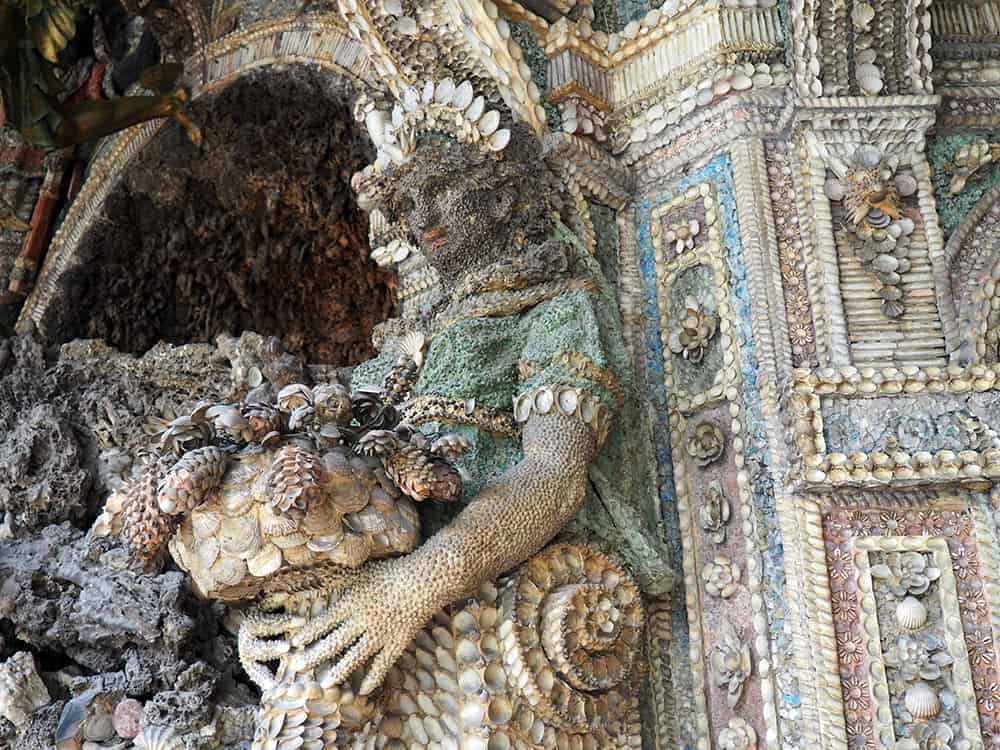
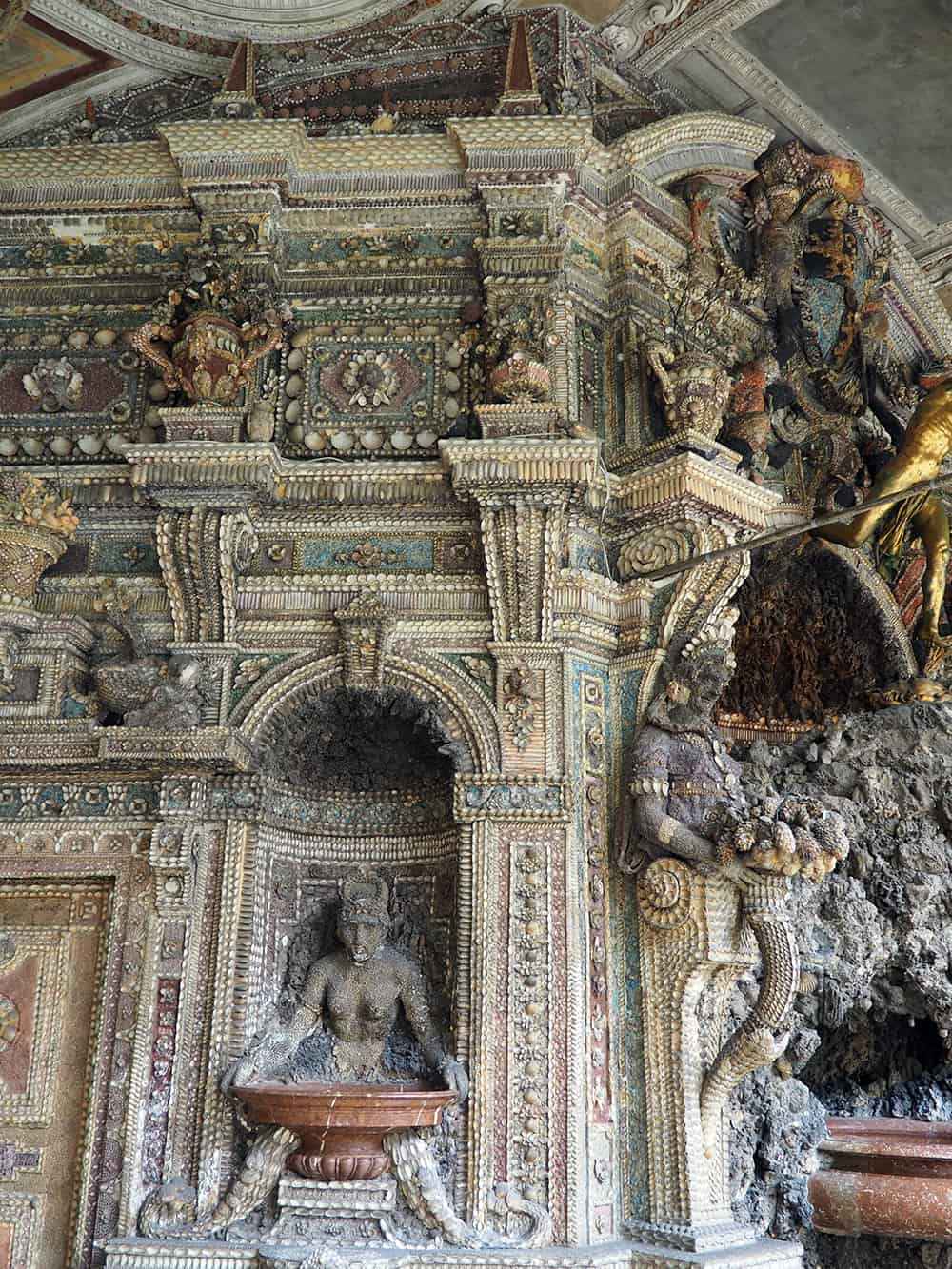
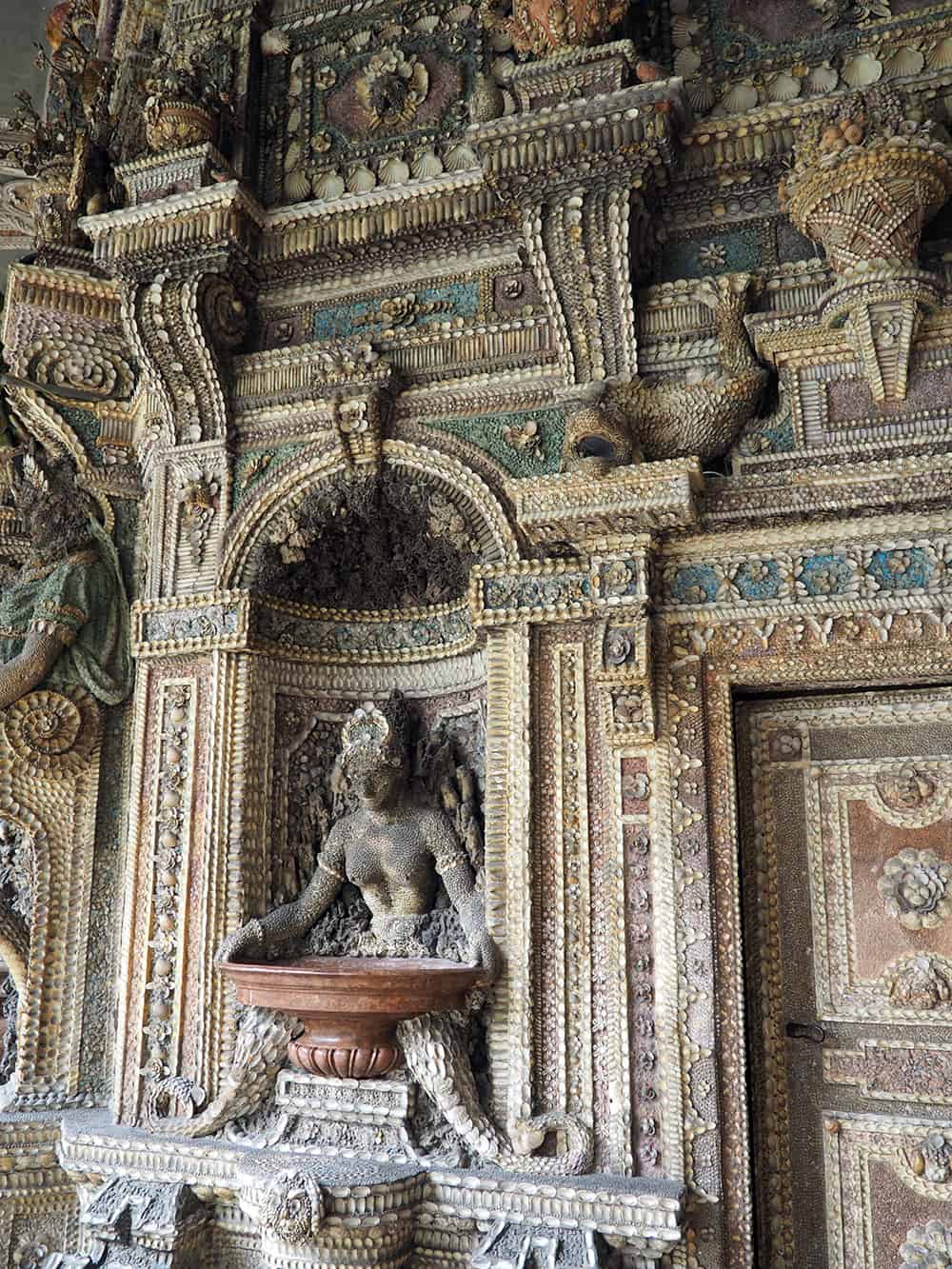
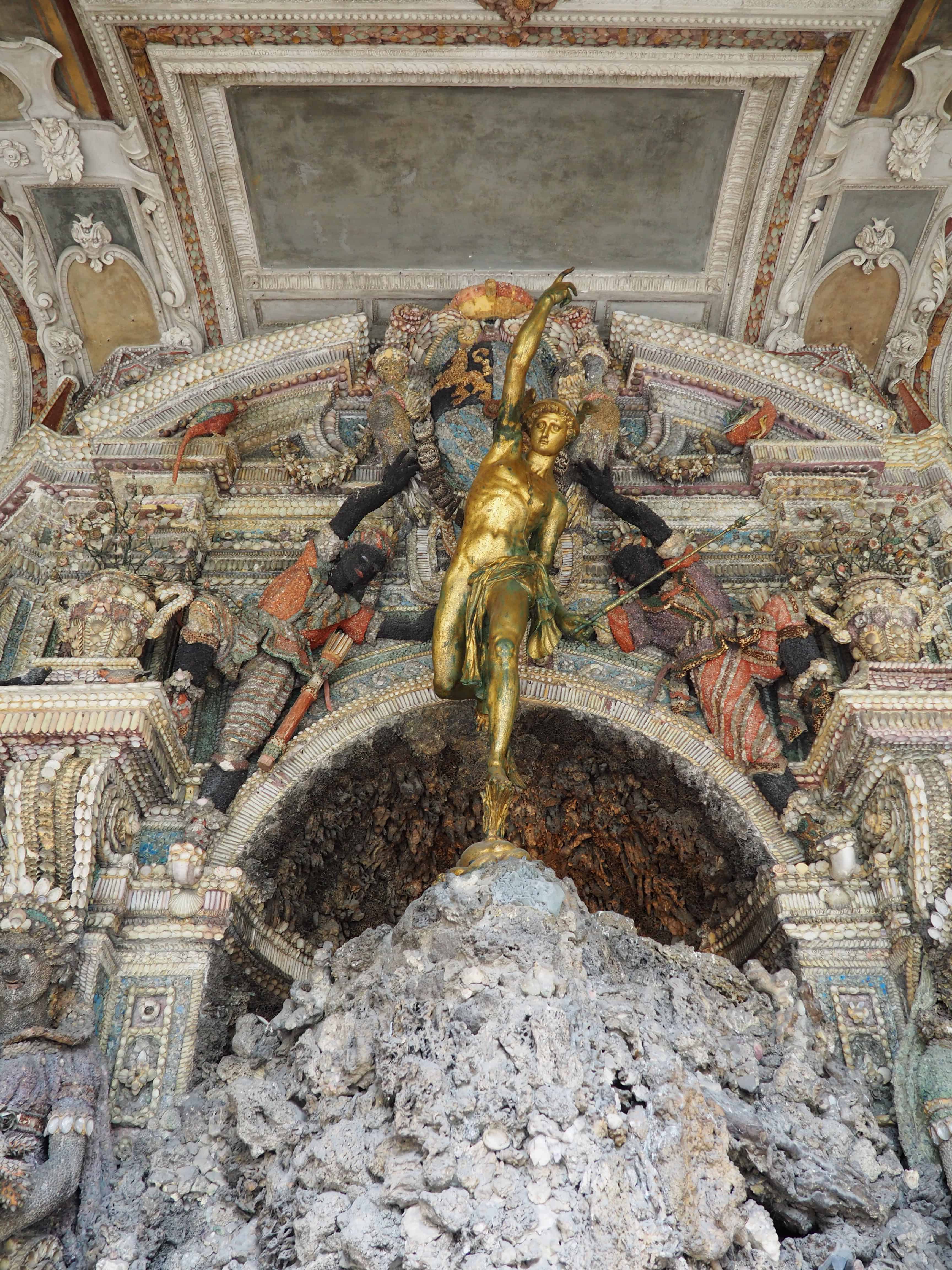
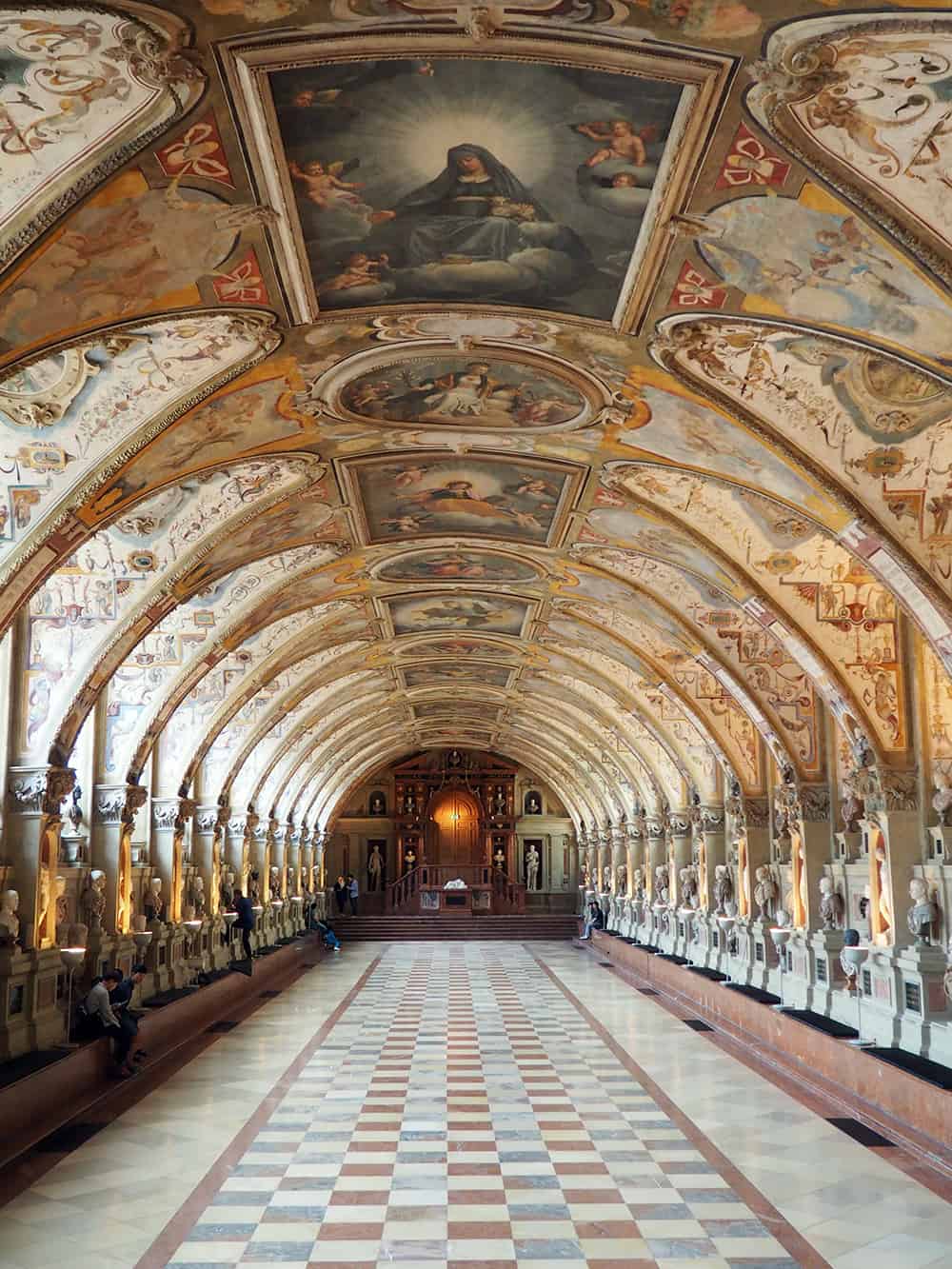
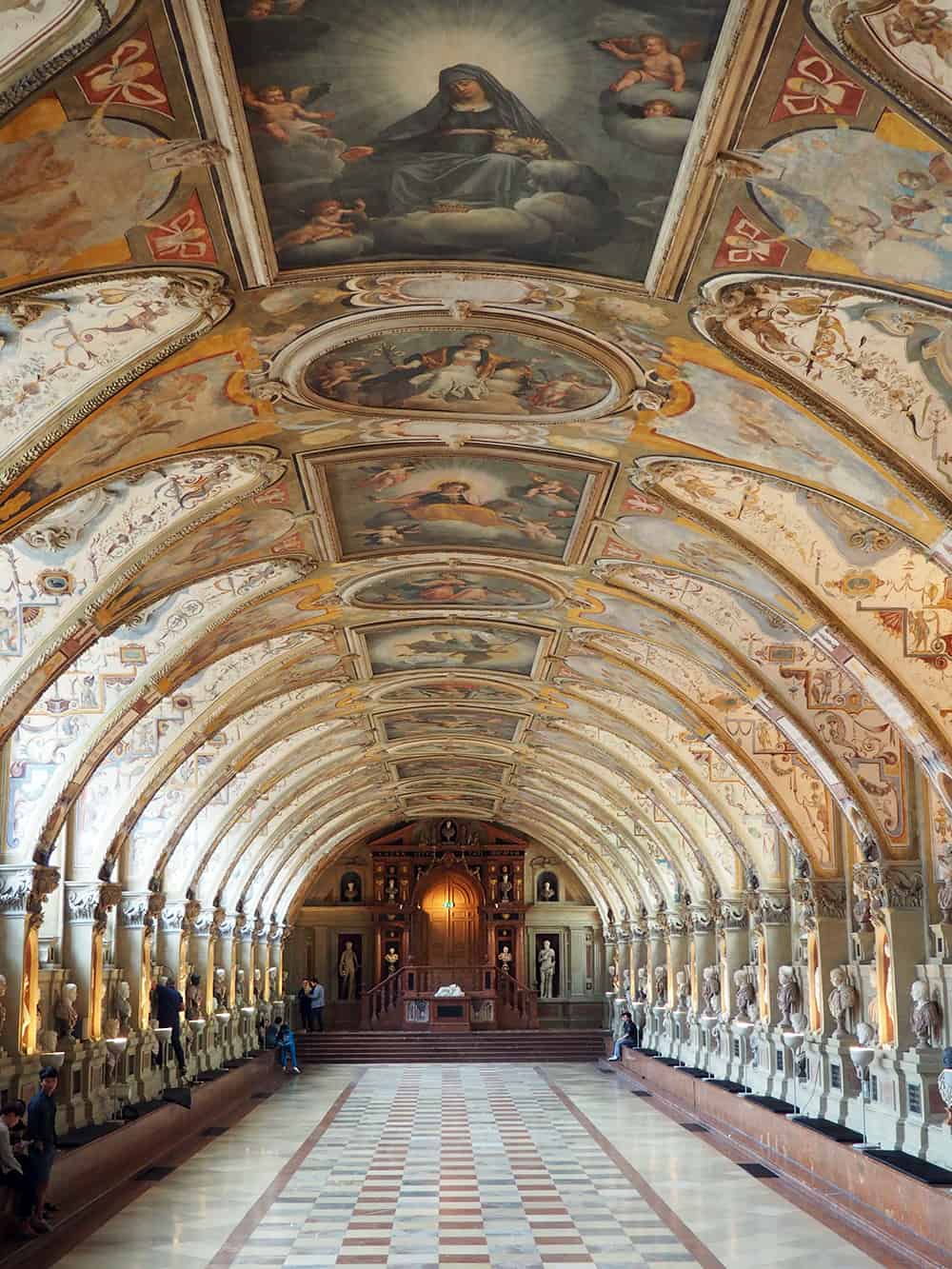
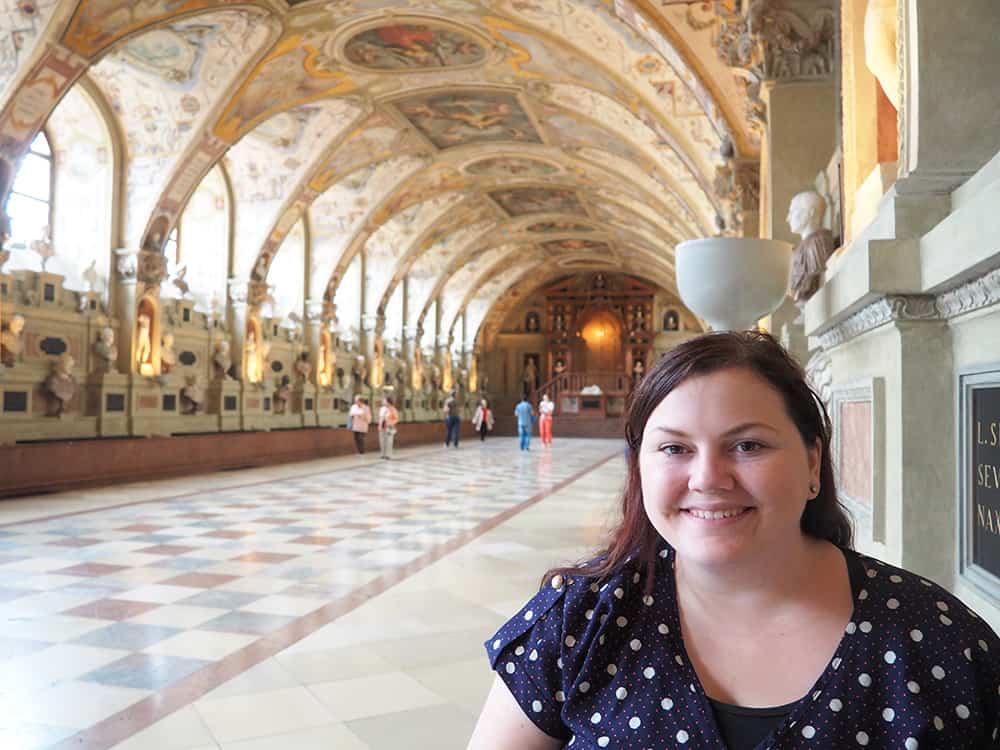

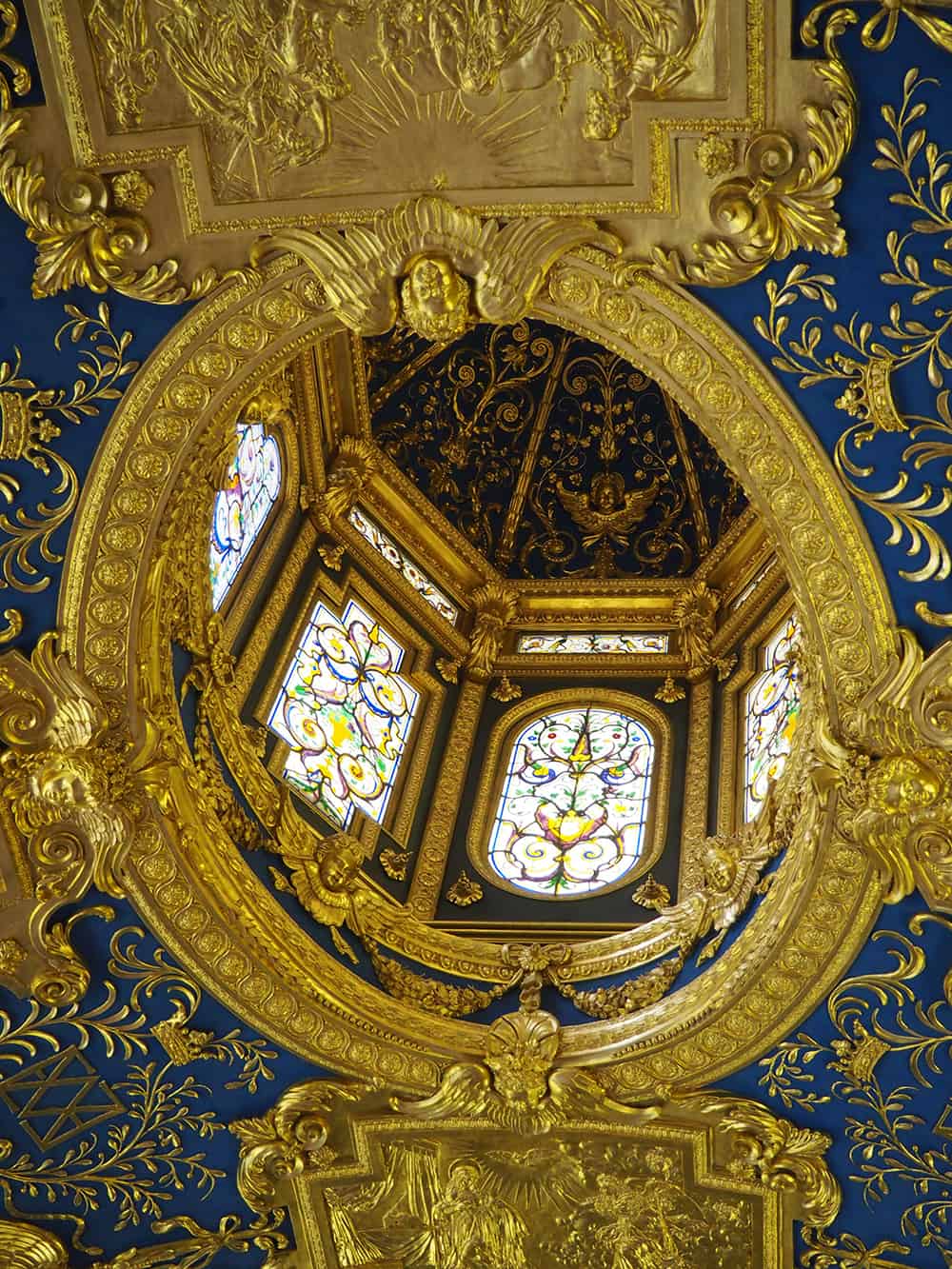
The last picture is a chapel within the Munich Residenz. The Munich Residenz was severely damaged in World War II and this is one of the rooms that was not repaired. According to Wikipedia:
Most of its rooms were reconstructed by the 1980s. Some of the buildings, however, were rebuilt in a simplified manner. Examples of this are the facade of the Alte Residenz on Residenzstrasse or the Arcades in front of the former throne hall on the first floor of the Festsaalbau. A substantial loss was caused by the destruction of the neo-classical rooms and halls in the Festssalbau (including the Grand Throne Hall, now the Hercules Concert Hall, and the Grand Stairway), of the rich décor of the Papal Rooms including the ceiling of the Golden Hall and of the apartment of King Ludwig II (1864-1886). The frescoes of the Court Church of All Saints were also completely destroyed.
Englischer Garten
The Englischer Garten in Munich, Germany is one of the world’s largest urban public parks. We walked around to look at the gardens, but we weren’t able to take everything in because we were tight on time after the rain. Some interesting stats that Wikipedia states though is the park has over roughly 75 km paths and walkways, 100 bridges, and 50-60 bird species that breed there.
Marienplatz
Marienplatz has been in the city center of Munich, Germany since 1158. It houses the new city hall, the Rathaus-Glockenspiel, beautiful statues, and the Christmas market three years before Christmas.
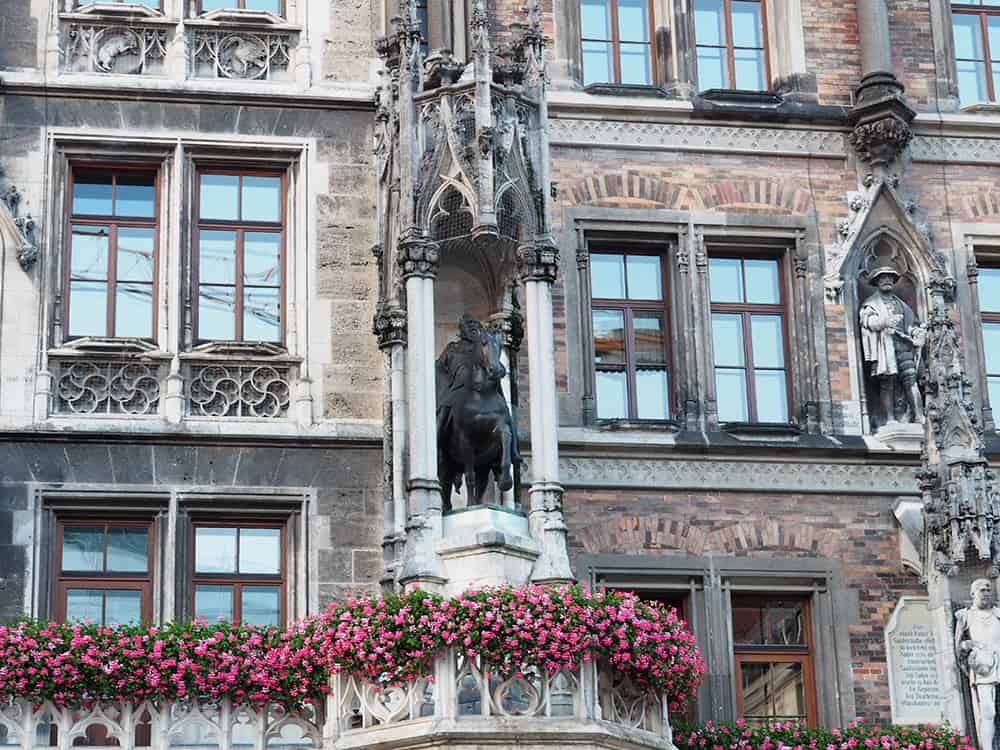

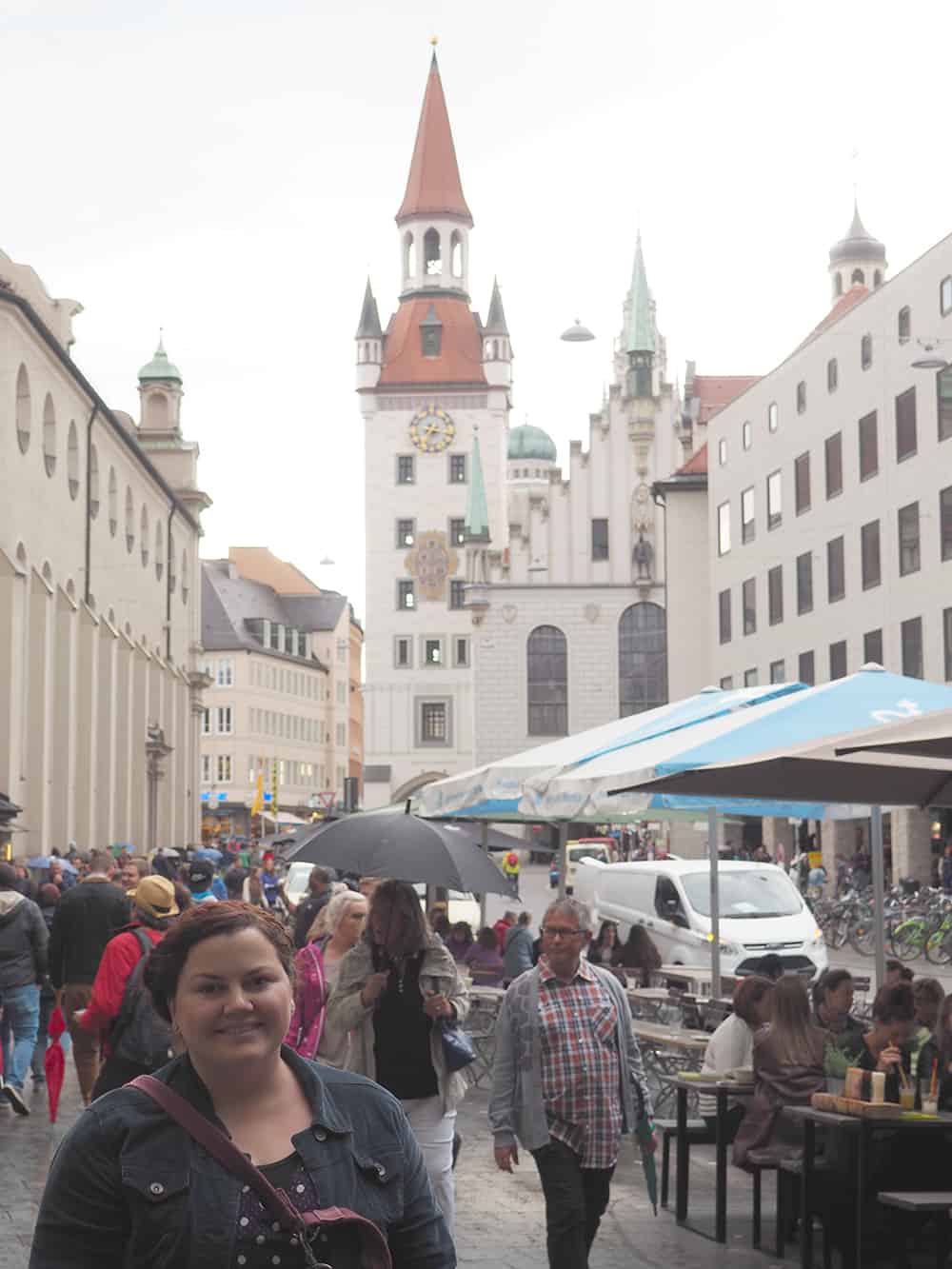
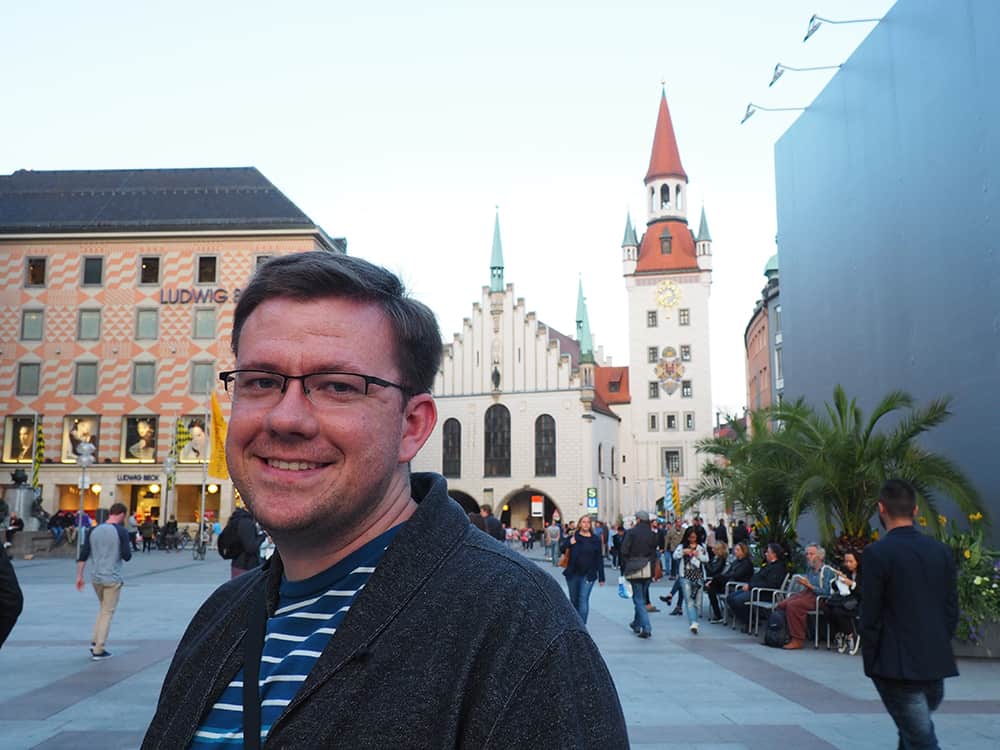
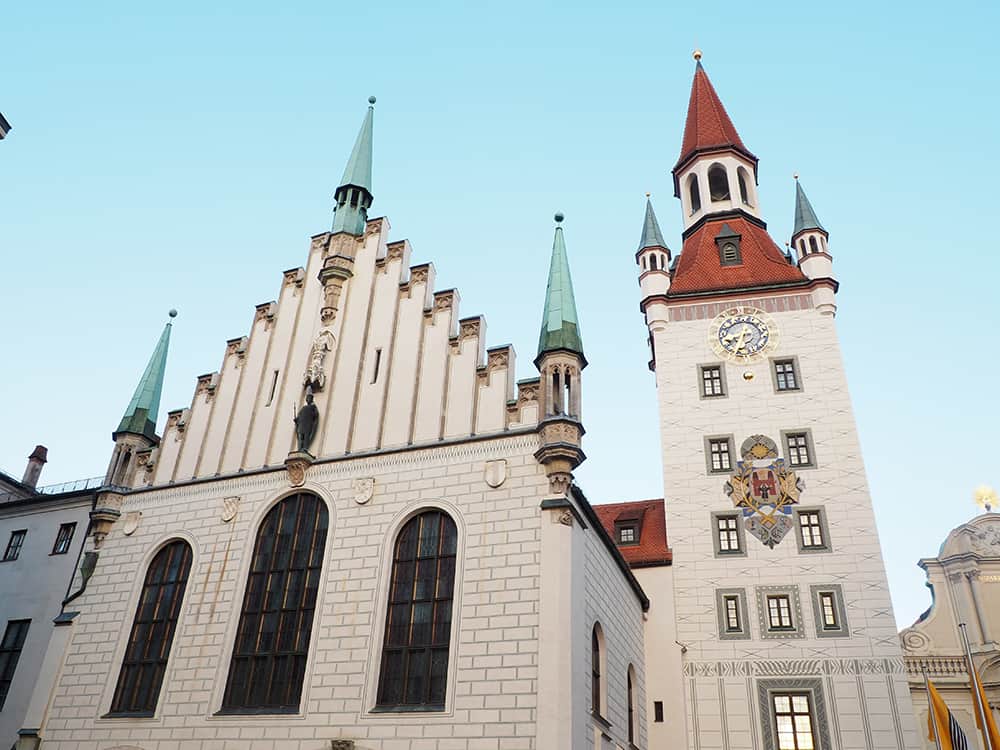
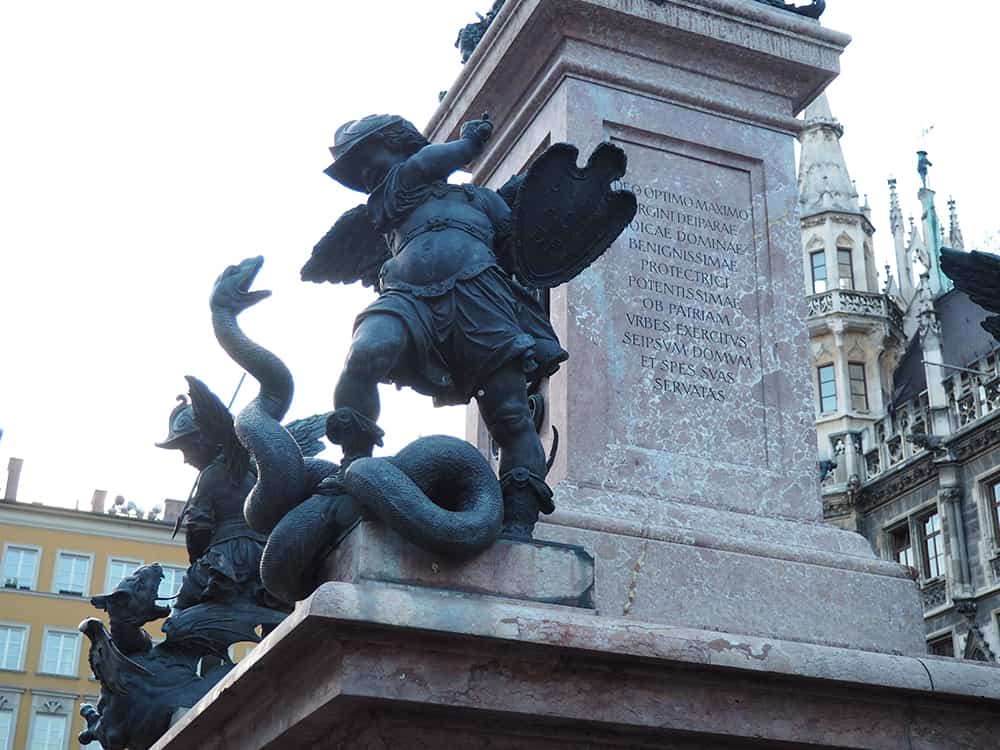
Rathaus-Glockenspiel
Confession: we somehow missed every time the Rathaus-Glockenspiel was in action. Every time. The glockenspiel was added in 1908 and displays everyday at 11 AM, 5 PM, and noon in the summers. Wikipedia explains:
it chimes and re-enacts two stories from the 16th century to the amusement of mass crowds of tourists and locals. It consists of 43 bells and 32 life-sized figures. The top half of the Glockenspiel tells the story of the marriage of the local Duke Wilhelm V (who also founded the world famous Hofbräuhaus) to Renata of Lorraine. In honor of the happy couple there is a joust with life-sized knights on horseback representing Bavaria (in white and blue) and Lothringen (in red and white). The Bavarian knight wins every time, of course.
This is then followed by the bottom half and second story: Schäfflertanz (the coopers’ dance). According to myth, 1517 was a year of plague in Munich. The coopers are said to have danced through the streets to “bring fresh vitality to fearful dispositions.” The coopers remained loyal to the duke, and their dance came to symbolize perseverance and loyalty to authority through difficult times. By tradition, the dance is performed in Munich every seven years. This was described in 1700 as “an age-old custom”, but the current dance was defined only in 1871. The dance can be seen during Fasching (German Carnival): the next one is in 2019.
The show itself lasts around 12 minutes!

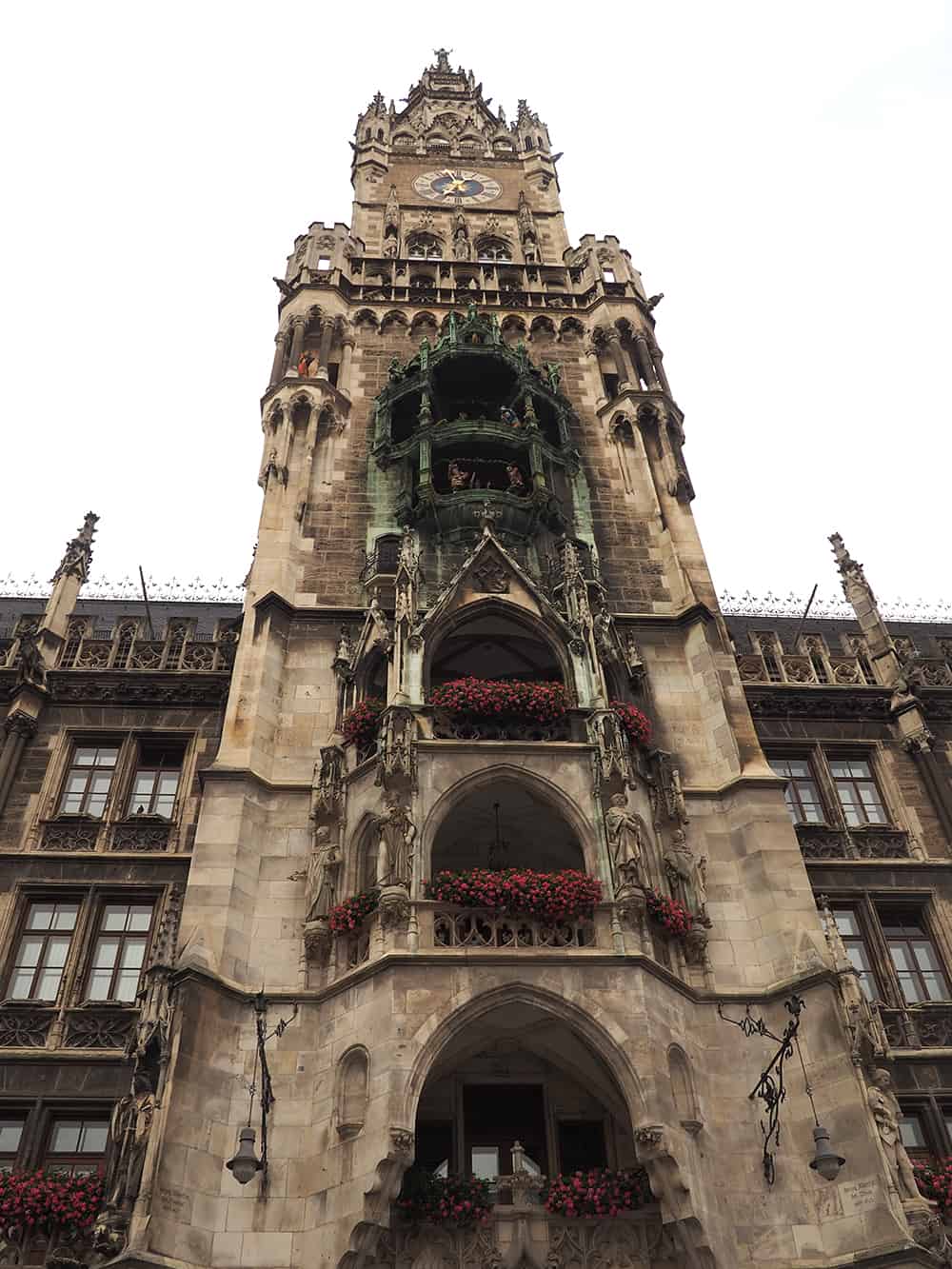
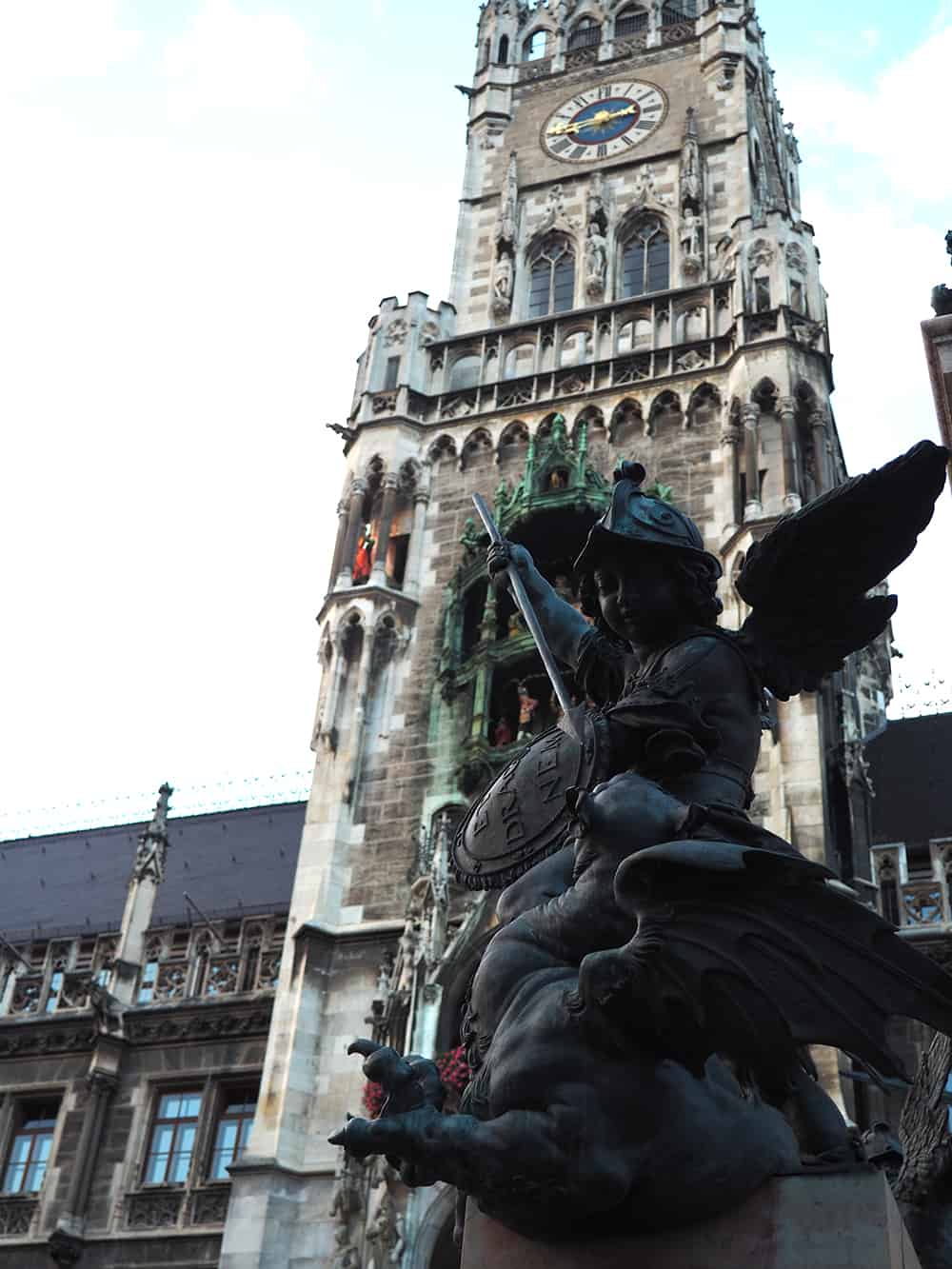



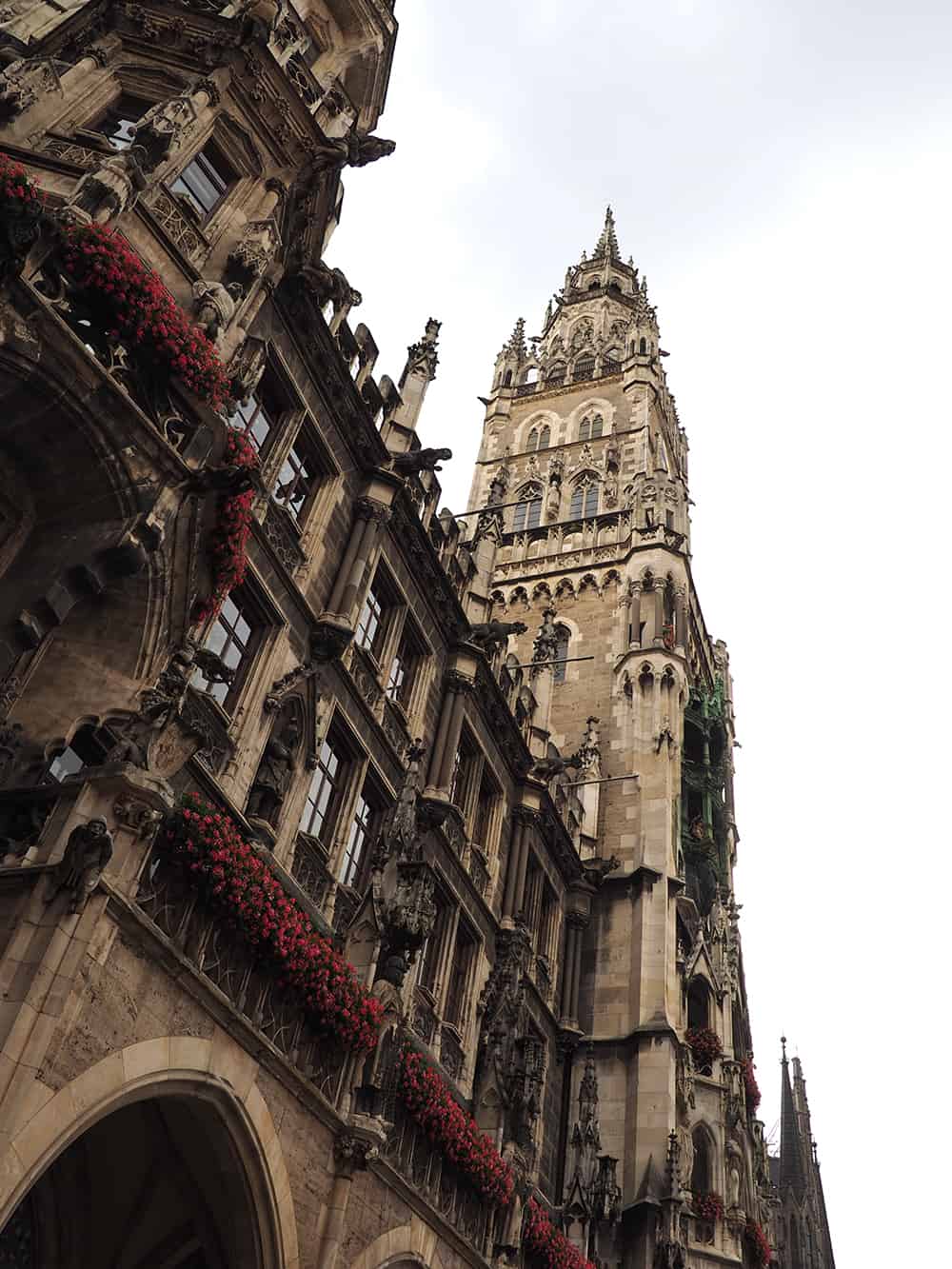
Frauenkirche, Munich
The Frauenkirche in Munich was built in the 13th century. The exterior was under construction while we were visiting, but the interior views were gorgeous with Gothic architectural details and stained glass. Out of all of the churches we visited in Europe, I can honestly say that this one was the one that was my favorite. In the church, the ceilings are over a 100 feet tall and had the biggest stained glass windows I have ever seen. There were so many simple elements in the church next to so many details.
There was a lot of interior damage during WWII, but something that survived was the Teufelstritt or Devil’s Footstep. According to Wikipedia, the Devin’s Footstep is:
…a black mark resembling a footprint, which according to legend was where the devil stood when he curiously regarded and ridiculed the ‘windowless’ church that Halsbach had built. (In baroque times the high altar would obscure the one window at the very end of the church visitors can spot now when standing in the entrance hall.)
In another version of the legend, the devil made a deal with the builder to finance construction of the church on the condition that it contain no windows. The clever builder, however, tricked the devil by positioning columns so that the windows were not visible from the spot where the devil stood in the foyer. When the devil discovered that he had been tricked, he could not enter the already consecrated church. The devil could only stand in the foyer and stomp his foot furiously, which left the dark footprint that remains visible in the church’s entrance today.



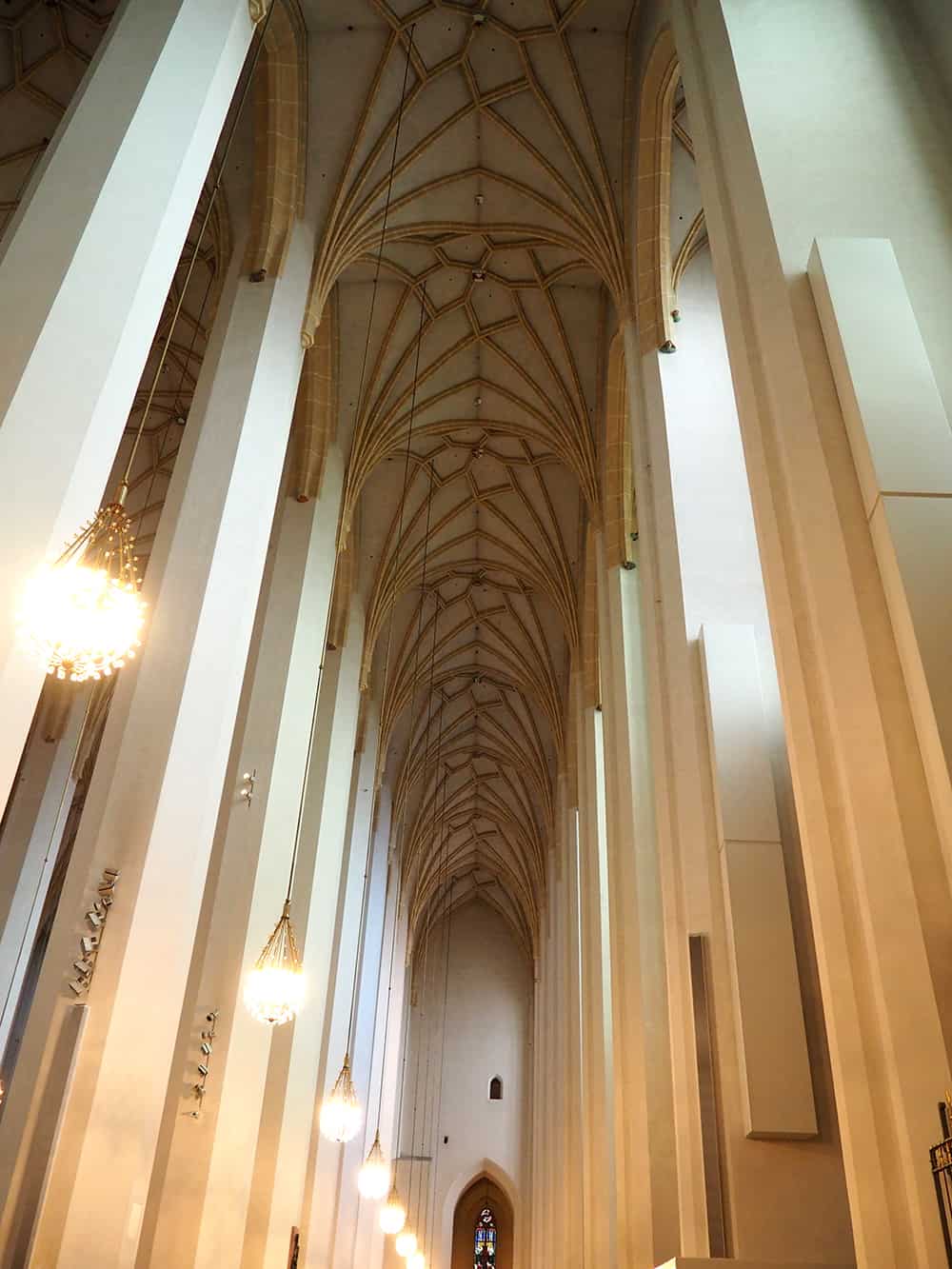
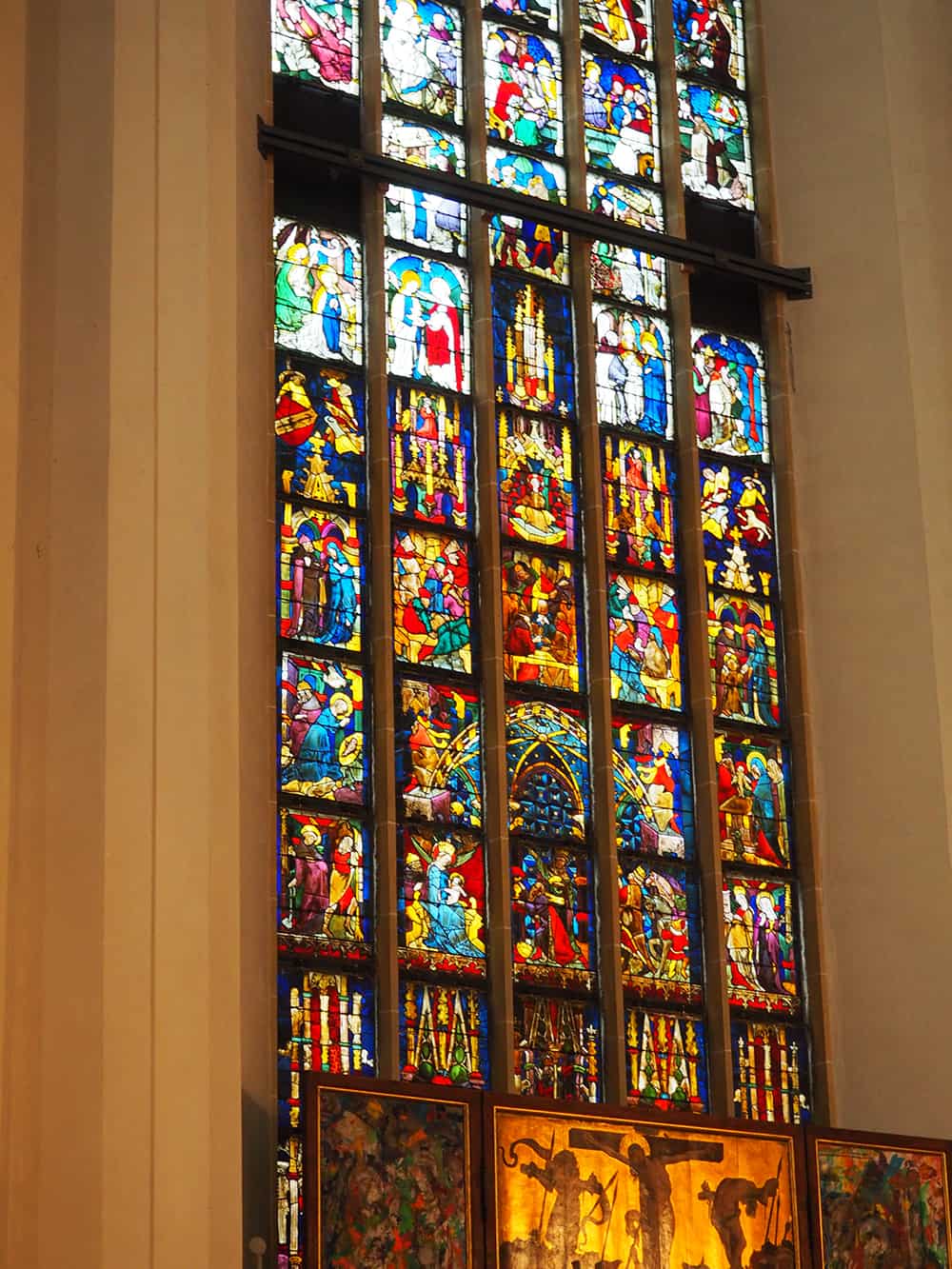
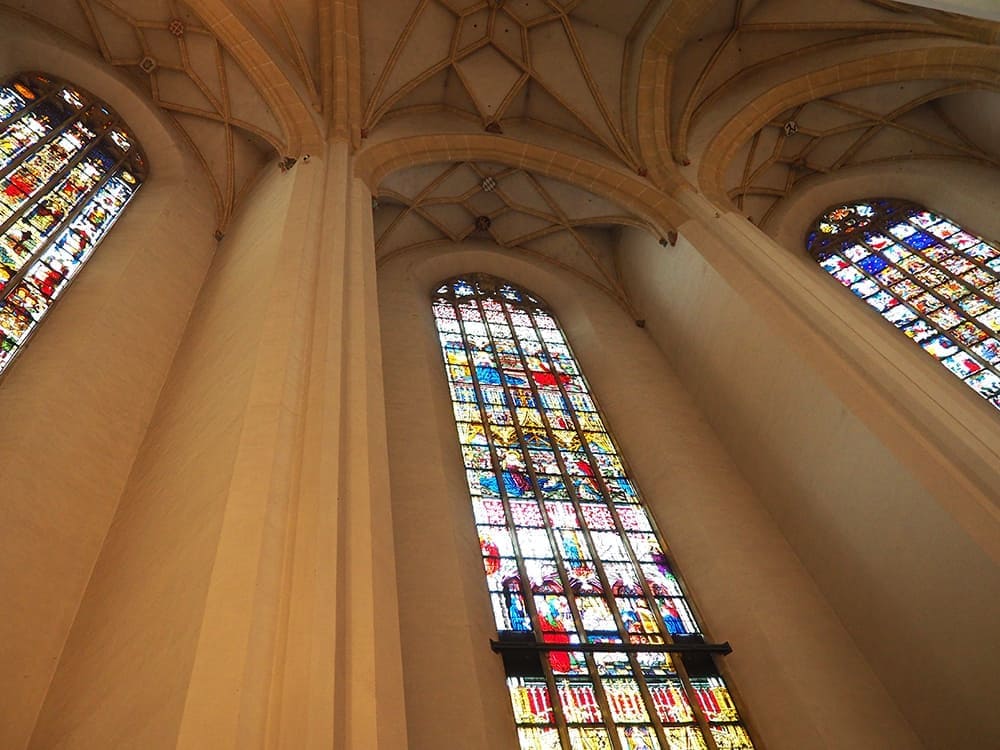
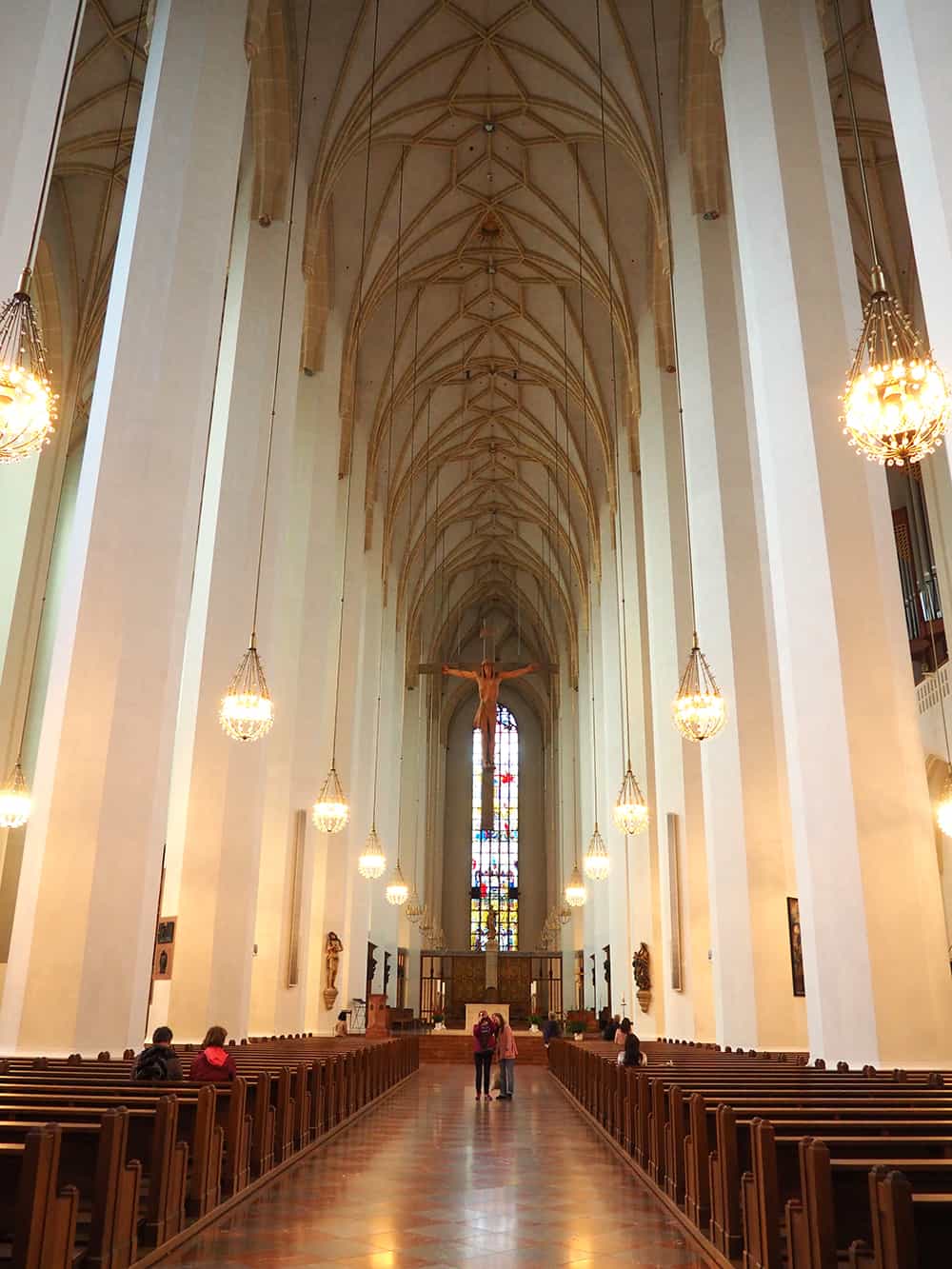
Dachau Concentration Camp Memorial Site
We took the train out of Munich and then hopped on a tourist train to reach this location. While at Dachau Concentration Camp though, I only took one picture because it honestly just felt weird to take a lot of photos. It was sobering to see a concentration camp in person. We’ve been to the United States Holocaust Memorial Museum in Washington DC and we found it more informative, but nothing can replace the experience of actually having been to a concentration camp. I think the weirdest thing for me was seeing how there were just fences, normal houses, and tennis courts surrounding the concentration camp. It was honestly really surreal to picture normal life going around while people were being dying within the walls based on their religious beliefs, sexual orientation, ethnicity, or political affiliations.
Neuschwanstein Castle
We didn’t make it to the famous Neuschwanstein Castle because TICKETS WERE SOLD OUT. If you want to visit, make sure you buy tickets ahead! This vacation was pretty by the seat of our pants so there wasn’t a lot of planning involved. We did learn, however,it pretty much takes a day to get to the castle and it isn’t the most historic place around (construction started in 1869).
You can see a great guide here though for information I wish I could suggest though 😉 .
TIME WELL SPENT IN MUNICH, GERMANY
I don’t remember all of the food we ate, but all of it was excellent! We did have a funny experience in a restaurant though. The restaurant was built in the 1300s and Devin was seated on a very huge wooden bench that was built into the wall. While we were eating dinner, we began seeing mice FLY out of the foot of that bench. We didn’t know what to do, but these were all of these mice by our feet in an expensive to us restaurant. I quietly told the waiter and he told me that he couldn’t do anything about it. The table next to us was a German family. They all began standing up within the next 10 minutes and trying to catch the mice by stomping. This was definitely an interesting experience for us haha! As we walked throughout different parts of the city, we began to notice mice everywhere: in the bike racks, near subway stairwells etc. It was very surprising!


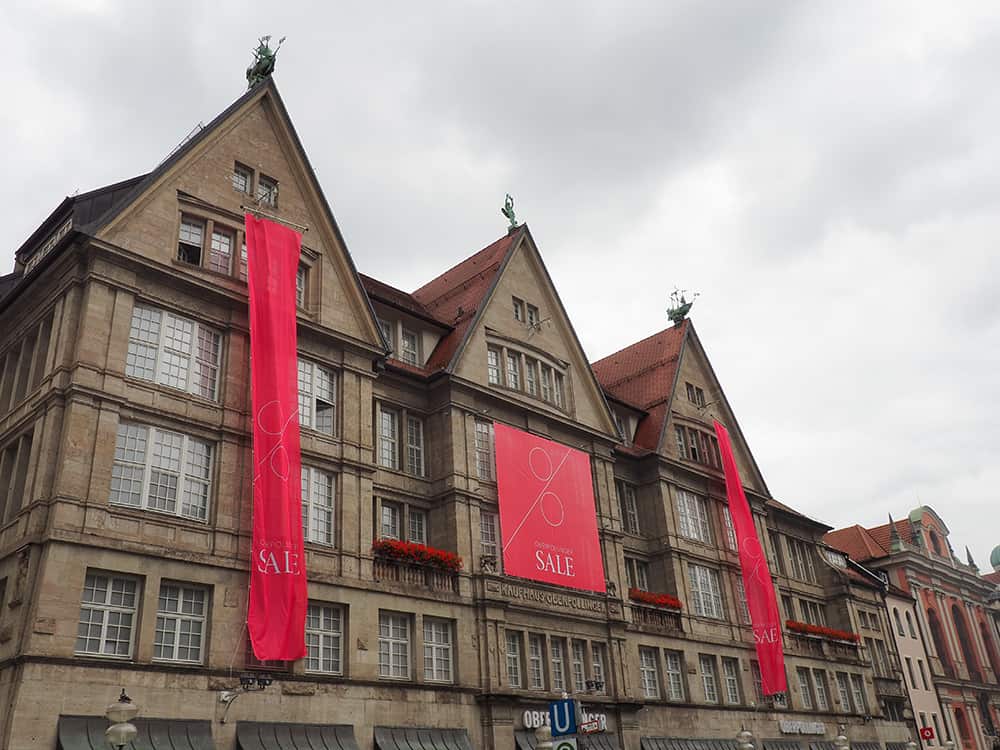
While I say that we want to visit most places again, our trip to Munich, Germany made us realize how much of Germany we hadn’t been able to see. We had a few Germans talk to us on the train and ask us where we were going; consistently, they were disappointed that we had only made time to visit the Bavarian area. Everyone we met told of about the distinctly different areas of Germany and how beautiful it is. Since both of our father’s had lived in Germany in the military, we were definitely interested in seeing more already and our visit to Munich, Germany only piqued our interest more.
